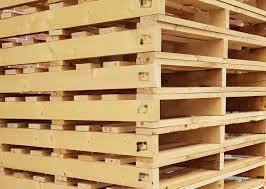In the world of logistics and supply chain management, pallets play a crucial role in the safe and efficient transportation of goods. Among the various pallet types, Epal pallets stand out for their standardized dimensions and quality assurance. This article explores Epal pallet sizes, their dimensions, and the standards governing their use, providing valuable insights for businesses seeking optimal shipping solutions.
What Are Epal Pallets?
Epal pallets, commonly known as Euro pallets, are standardized wooden pallets endorsed by the European Pallet Association (EPAL). These pallets facilitate international trade by providing a uniform size that fits seamlessly with European transport systems. Epal pallets are recognized for their durability, eco-friendliness, and reliability in transporting various goods.
Epal Pallet Sizes and Dimensions
Epal pallets adhere to specific dimensions set forth by the EPAL, ensuring compatibility across various industries. Understanding these dimensions is crucial for businesses involved in shipping and logistics.
Standard Epal Pallet Size
The standard size of an Epal pallet is:
- Length: 1200 mm (47.24 inches)
- Width: 800 mm (31.50 inches)
- Height: Approximately 144 mm (5.67 inches)
This size is often referred to as the Euro pallet and is widely used across Europe and beyond. The uniformity of this size allows for efficient stacking and storage, making it an ideal choice for transportation.
Weight Capacity
Epal pallets are designed to handle significant weight, making them suitable for various applications. The load capacity of a standard Epal pallet is:
- Static Load Capacity: 4,000 kg (8,818 lbs)
- Dynamic Load Capacity: 2,000 kg (4,409 lbs)
These weight capacities ensure that Epal pallets can support a wide range of products, from heavy machinery to consumer goods.
Types of Epal Pallets
While the standard Epal pallet size remains consistent, there are several variations designed for specific applications. Understanding these variations can help businesses choose the right pallet for their needs.
Epal Block Pallets
Epal block pallets are constructed using blocks at each corner and in the middle. This design allows for easy handling from all sides, making them suitable for automated systems. Their dimensions are the same as the standard Epal pallet, but their construction offers increased stability and strength.
Epal Euro Pallets
These are the traditional Epal pallets most commonly used. They feature a symmetrical design, allowing for easy stacking and transportation. Epal Euro pallets are typically used in industries that require consistent shipping and storage solutions.
Epal Half Pallets
The half pallet is a smaller version of the standard Epal pallet, measuring:
- Length: 800 mm (31.50 inches)
- Width: 600 mm (23.62 inches)
Half pallets are ideal for retail environments, allowing for better space utilization and efficient display in stores.
Benefits of Using Epal Pallets
Choosing Epal pallets for shipping and storage offers numerous advantages:
Standardization
Epal pallets are standardized across Europe, simplifying logistics and reducing confusion in transportation. This uniformity ensures that goods can be loaded and unloaded efficiently, minimizing delays.
Durability
Constructed from high-quality wood, Epal pallets are designed to withstand heavy loads and frequent handling. Their robust design ensures they can be reused multiple times, making them a cost-effective option for businesses.
Eco-Friendliness
Epal pallets are made from sustainably sourced wood, promoting environmentally friendly practices. The EPAL certification ensures that the pallets meet strict environmental standards, making them a responsible choice for eco-conscious businesses.
Cost-Effectiveness
Due to their durability and reusability, Epal pallets offer significant cost savings over time. Businesses can reduce their shipping costs by utilizing pallets that require less frequent replacement.
Epal Pallet Standards
Epal pallets are governed by strict standards to ensure quality and reliability. The European Pallet Association (EPAL) oversees these standards, providing a framework for pallet construction, quality control, and maintenance.
Quality Control
EPAL sets rigorous quality control measures for manufacturers to adhere to, ensuring that all Epal pallets meet the required specifications. This quality assurance guarantees that businesses receive reliable pallets that can handle their transportation needs.
Marking and Certification
All Epal pallets are stamped with the EPAL logo and a unique license number, indicating that they meet the required standards. This marking ensures that businesses can easily identify genuine Epal pallets and avoid counterfeit products.
Maintenance and Repair
Epal pallets can be repaired if damaged, extending their lifespan and reducing waste. Businesses are encouraged to maintain their pallets properly and seek repairs to ensure continued compliance with EPAL standards.
Conclusion
Epal pallets play a vital role in the logistics and supply chain industry, providing standardized sizes and robust design for efficient shipping and storage. Understanding the dimensions, types, and benefits of Epal pallets can help businesses optimize their operations and enhance their overall efficiency. As the demand for sustainable and cost-effective shipping solutions continues to grow, Epal pallets remain a top choice for companies looking to improve their logistics processes.
FAQs
1. What is the standard size of an Epal pallet?
The standard size of an Epal pallet is 1200 mm x 800 mm (47.24 inches x 31.50 inches).
2. How much weight can an Epal pallet hold?
An Epal pallet can hold a static load capacity of up to 4,000 kg (8,818 lbs) and a dynamic load capacity of 2,000 kg (4,409 lbs).
3. Are Epal pallets environmentally friendly?
Yes, Epal pallets are made from sustainably sourced wood and meet strict environmental standards, making them an eco-friendly choice for businesses.
4. Can Epal pallets be repaired?
Yes, Epal pallets can be repaired if damaged, extending their lifespan and reducing waste.
5. How can I identify a genuine Epal pallet?
Genuine Epal pallets are marked with the EPAL logo and a unique license number, ensuring compliance with EPAL standards.


